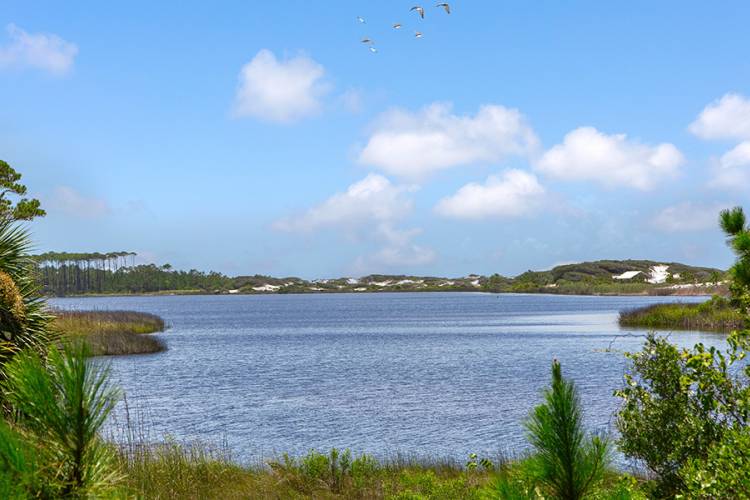Each year, the Emerald Coast welcomes millions of visitors to its shores. And for good reason. The sand is soft, white, and pristine. The Gulf waves sparkle like gemstones in the sun. The atmosphere is warm and relaxed, which is perfect for a beach vacation.
While the beach might be the first thing you notice, it’s not the only thing that defines the coast’s beauty. Indigenous plants contribute to the stunning scene. Take these away, and this top vacation destination just wouldn’t be the same. If you’re planning a visit, it’s fun to learn about the unique environment that makes South Walton so special. To start, here are the top five indigenous plants of 30A, recommended to us by Energy & Environment, a local ecological consulting firm that supports habitat restoration and protection of Florida’s unique natural resources.
Blue Lupine
Blue lupines are delicate plants that brighten the 30A beaches each spring. 30A’s sandy, acidic soil is the ideal habitat for this pretty plant, which has an extended root system to keep it firmly planted in the ground. The plant features blue-purple petals, gray fruits, and pockets of seeds. As a state-protected plant, it is important for visitors to look, but not touch. Picking the flowers disrupts the flower’s natural cycle, and prevents it from thriving. Fun fact: Blue Mountain Beach on 30A was named for these distinguishable flowers, as it is said that incoming sailors thought the blue lupine flowers covering the sand dunes made them look like blue mountains.
Slash Pines (Pinus elliottii)
Slash Pines are conifer trees that thrive in the swampy ground common in Northwest Florida. The high moisture content in the soil enable optimal growth and protect the seedlings from wildfire. You can find these trees all along Scenic Highway 30A, but there’s one especially iconic spot to catch a glimpse of these strong, durable giants—Western Lake in Grayton Beach State Park. This beautiful spot has become the focus of many photographs and paintings.
Railroad Vine (Ipomoea pes-caprae)
Railroad Vine is a rapidly growing, low-lying plant with green leaves and pink flowers that bloom throughout the year. With its tolerance for sandy soil and salty air, it’s no wonder this plant does so well on the Emerald Coast. Not only is it pretty, it can be used for sand dune stabilization, thus preventing erosion and helping to maintain the beach environment and habitats.
Beach Sunflower (Helianthus debilis)
It’s no surprise that at least one of 30A’s top five indigenous plants is a type of sunflower. After all, the beach and sun go together like cake and ice cream! The Beach Sunflower is a bright flower with long stems and large yellow blossoms. It blooms nearly year-round in the warm Emerald Coast climate. The plant thrives in coastal areas, as it can tolerate salty and acidic soil.
Large-Leaf Jointweed (Polygonella macrophylla)
Large-Leaf Jointweed is a perennial plant located near coastal scrub oaks and in sandy areas. The plant is usually found in clusters, and it blooms with white, pink, or red flowers in the fall. Although this native plant is threatened due to habitat loss resulting from coastal development, there are fortunately plenty of areas on 30A where these plants grow and are protected. You will often see them when out exploring the hiking, biking, and nature trails in South Walton.
These indigenous plants represent the various coastal habitats on and around 30A, as well as represent iconic 30A scenes. The next time you visit this pristine beach highway, be sure to stop and appreciate the beauty they add to the landscape. Without them, this stretch of coast would look much different!

